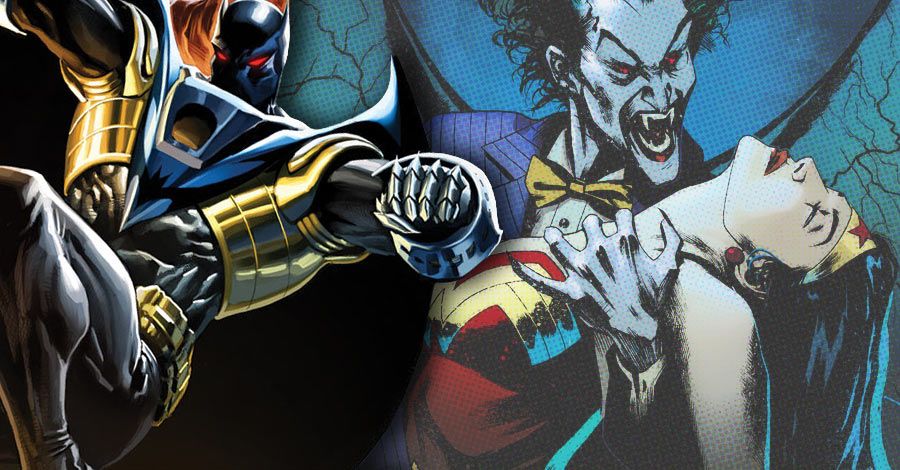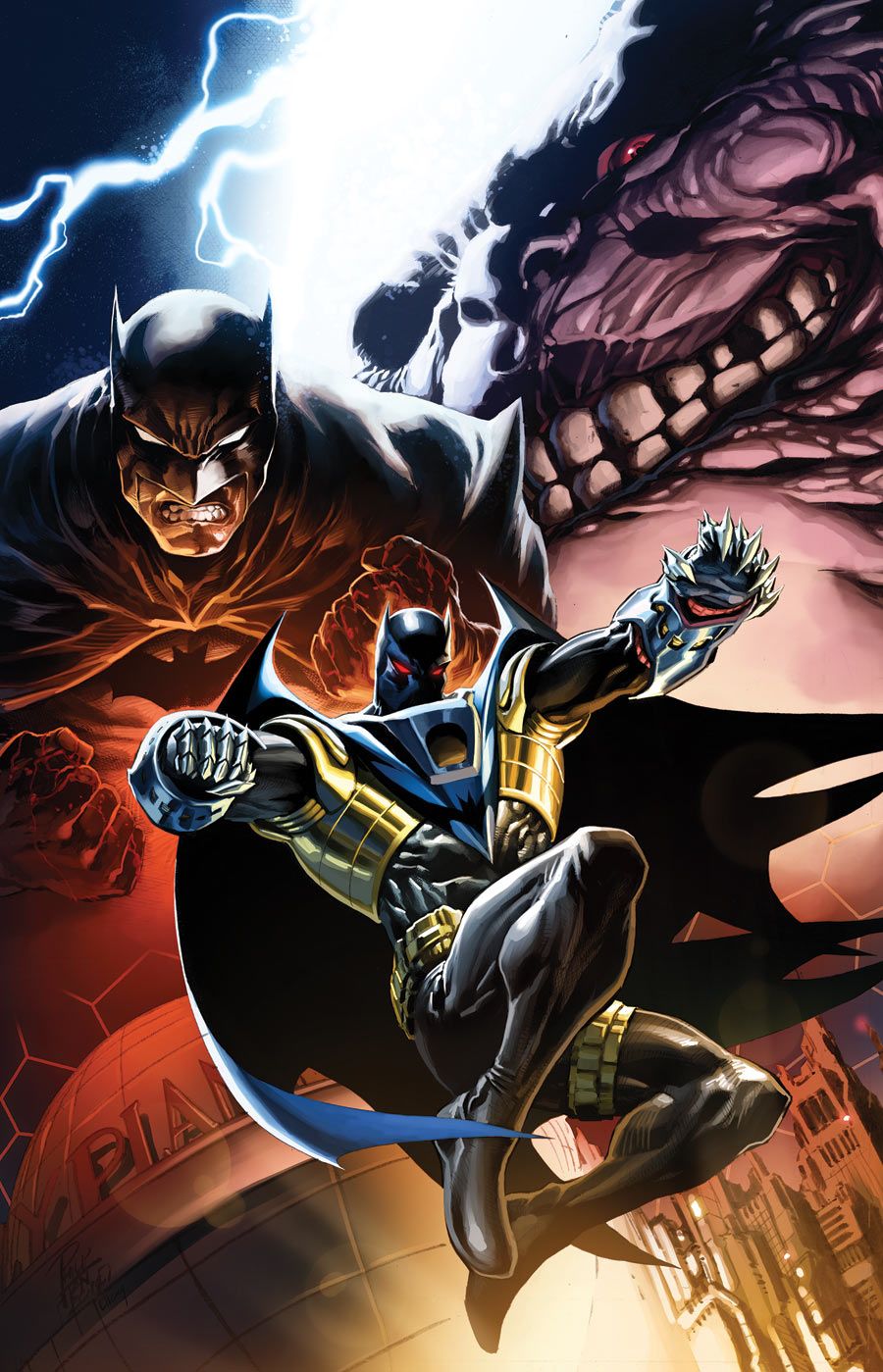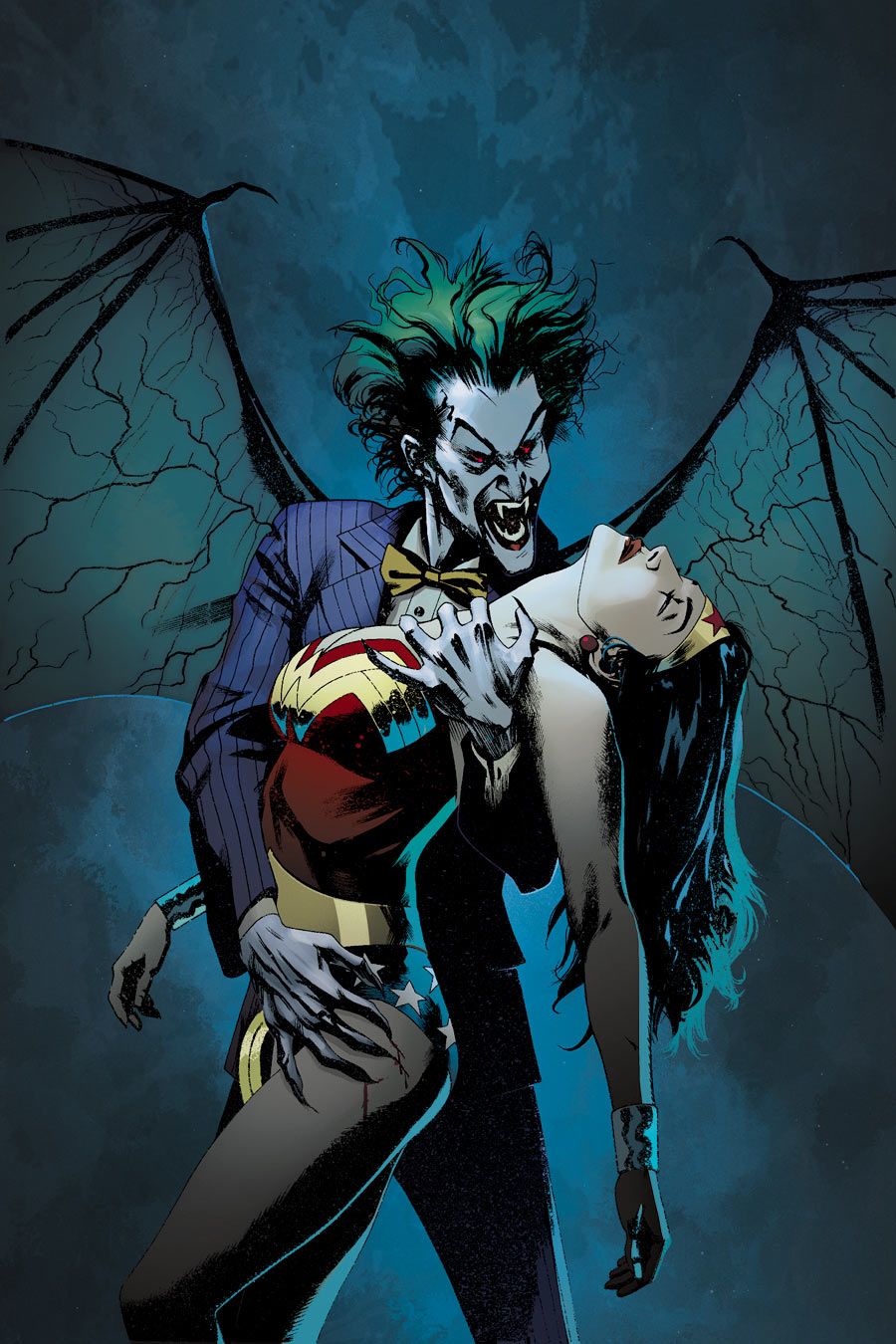Larry Hama knows what kind of comic story he likes to tell.
As the veteran artist-turned-writer heads into DC Comics' "Convergence" event, he's revisiting old haunts and sticking to his signature style. A "plot-first" writer for years, Hama builds his comics on high concept visuals for his artists, which in this case are Philip Tan on "Convergence: Shadow of the Bat" and Joshua Middleton on "Convergence: Wonder Woman."
Of course, the upcoming event also offer Hama a unique opportunity to return home. Set during the "Knightfall" era of the Dark Knight's saga of the '90s and shortly after Wonder Woman's jumpsuited "new" look of the '70s, both miniseries connect to times when the writer worked on the respective franchises.
RELATED: Nicieza Revives A "Titans" Family & Unleashes "Superboy" for "Convergence"
In talking about his part in "Convergence" with CBR News, Hama explained why comics often replace their heroes before rebuilding the originals, how a more fun Batman can sit alongside a grim one and the way his stories will utilize the unique opportunities provided by the line-wide event to look at the visual motifs of city destruction and vampire action in a different way, and how excited he is to get a second stab at characters and eras he worked in previously.
CBR News: Larry, you've got some history with both characters you're writing in "Convergence"." Did DC come to you with the assignments and eras they wanted to see you play with?
Larry Hama: That's how it happened. I didn't have a choice, but luckily they were two characters I'm fairly familiar with. Having written Batman in a couple of different iterations, and having edited Wonder Woman, it came easy. It wasn't my choice, but of all the stuff they had, this fit me best.
In particular, I recall your "Batman" run with artist Scott McDaniel, which came shortly after the character returned to his classic state after the upheavals of the whole Knightfall/Azrael story in the '90s. Did writing the book just past that event era inform at all how you approached this "Convergence" series?
It was weird. It was sort of like Batman was in this schizophrenic flux, then. It was sort of this zone between the more traditional Batman and the new -- at that time -- edgier Batman they had done. I thought there was a way to split the difference between the two. You could have an older flavor to the book while still being a little edgy, but I think Editorial then hadn't decided. They were a little wishy washy, maybe. I got a chance to do some stories in "No Man's Land" and in "Shadow of the Bat," but that was a little more rough and tumble.
I would sort of like to do a really retro Batman, if I could. [Laughs] My introduction to Batman as a kid was in the late '50s and early '60s, when they were still having him fight bad guys in a Mardi Gras parade warehouse. The fights were choreographed on a giant spinning turntable or some other ridiculous prop. I loved those weird, surreal locations. But when you throw the concept into the more realistic, darker world, you lose that. I think there's probably a way to retain some of that while also being true to the new iterations.
Oddly enough, I think so much time has passed since the Azrael Batman came and went that what was viewed as very serious and gritty about it then could be played as kind of over the top or silly to a modern audience.
Yeah. I don't know if you'd want to play it sillier. I think the appeal of the character was that he's actually darker than Batman. It's an interesting contrast because, in a way, Batman is this classical type of DC hero. He's really sure of himself. Azrael is a little bit closer to the Marvel neurosis. That's the context that's fun to play with, other than the obvious contrasts between the two characters.
The other element of that story that stands out years later is that it was one of maybe a dozen stories in the '90s about darker, crazier version of big name heroes temporarily replacing the classics. And really, the only way to end a story like that is to revert to and reestablish the original.
It's an oddly formulaic way of rejuvenating certain characters. Otherwise, the character just sort of plods along. They need a jolt every once in a while, and taking them out of their own shoes and slapping someone else in them is a great way to do it. As long as the character doesn't come back and say, "Oh, that alternate reality never existed" it can work. It's much more interesting when there are some kind of lasting repercussions to a story like that.
I think that's a major problem with a lot of comic continuity. There are two tendencies that fight against each other. The one is strict canon, and the other tendency is to really mess with the characters and change them a lot. It's hard to tell which is best for all characters. Certain characters can really take the shake up, but other ones are so iconically cemented that it becomes hard to do that. I think Batman is more malleable in a lot of ways, where as if you change Superman it all starts to unravel -- especially if you mess with this ethical core.
So how do all these thoughts play into what you finally did in the story of "Convergence: Shadow of the Bat"?
Well, with the dome coming down and that whole setup, the characters are just kind of stuck in this messed up situation, sSo part of the way I went about constructing the story was by thinking of them less as plots and more as art. I came into this business drawing this stuff before they ever let me write anything. I still tend to visualize things first. This story grew out of my thinking of a really terrific visual I could riff on with these characters.
So the dome appears and it cuts the whole city off. What happens at the edge of that dome? Does it slice through buildings and pipes and everything? What if it cut through a commuter train halfway through the car? If you have that cool visual and everything ending there, you can throw the characters into crisis and see what they'll do.
Your Wonder Woman story also takes place at a time where the character had returned to her original form after a very different take from Denny O'Neil that was maybe less than enthusiastically received at the time.
[Laughs] Well, it really is all night baseball. You just throw this stuff out there, and see what works. I remember a lot of this stuff seeming like a neat idea at the time, but when you try to execute that it all goes awry. People always refer to that iteration of Wonder Woman as "The White Jumpsuit Wonder Woman" because that's what you remember. She was running around in a pantsuit! There was less of that iconic stuff like the Invisible Plane and Paradise Island.
And did you just pick that classic version back up and try to build on the visual story hook there? Because it's not just "Here's Wonder Woman." It's "Here's Wonder Woman...fighting vampires!"
Yeah. It's more than a visual hook. You think to yourself, "Wonder Woman fighting vampires -- that's a great visual stimulus." Instead of thinking of a plot with words, I tried to come up with the wildest images that fit the framework of that and hook them all together. That's how I've always worked, and it's maybe why I get a great reaction from my artists. They like to draw what I write because I avoid scenes of people just sitting around talking about the plot. [Laughs] I write what people want to draw pictures of, and I think I have an advantage in that way.
The artists are drawing your stories right now, and you're working with two different stylists in Philip Tan and Joshua Middleton. What's been your impression of their stuff so far?
Joshua is very elegant, and Philip is very action-oriented. I haven't seen the finished pages, but I've seen their breakdowns. It's all really exciting stuff.
The pitch for fans on books like these is the return of classic continuity, and in some ways a return to the visual stylings of past eras. As someone who's worked on those characters across those publishing eras, what's it been like to revisit DC history?
It's really fun to take a dip in the old pool. To play with these characters and these worlds after years of hopefully getting better at the craft, you think, "Wow! I'd have never thought to do this stuff back then." It's a miraculous thing to get a shot at a re-do, in some ways.
"Convergence: Shadow of the Bat" #1



